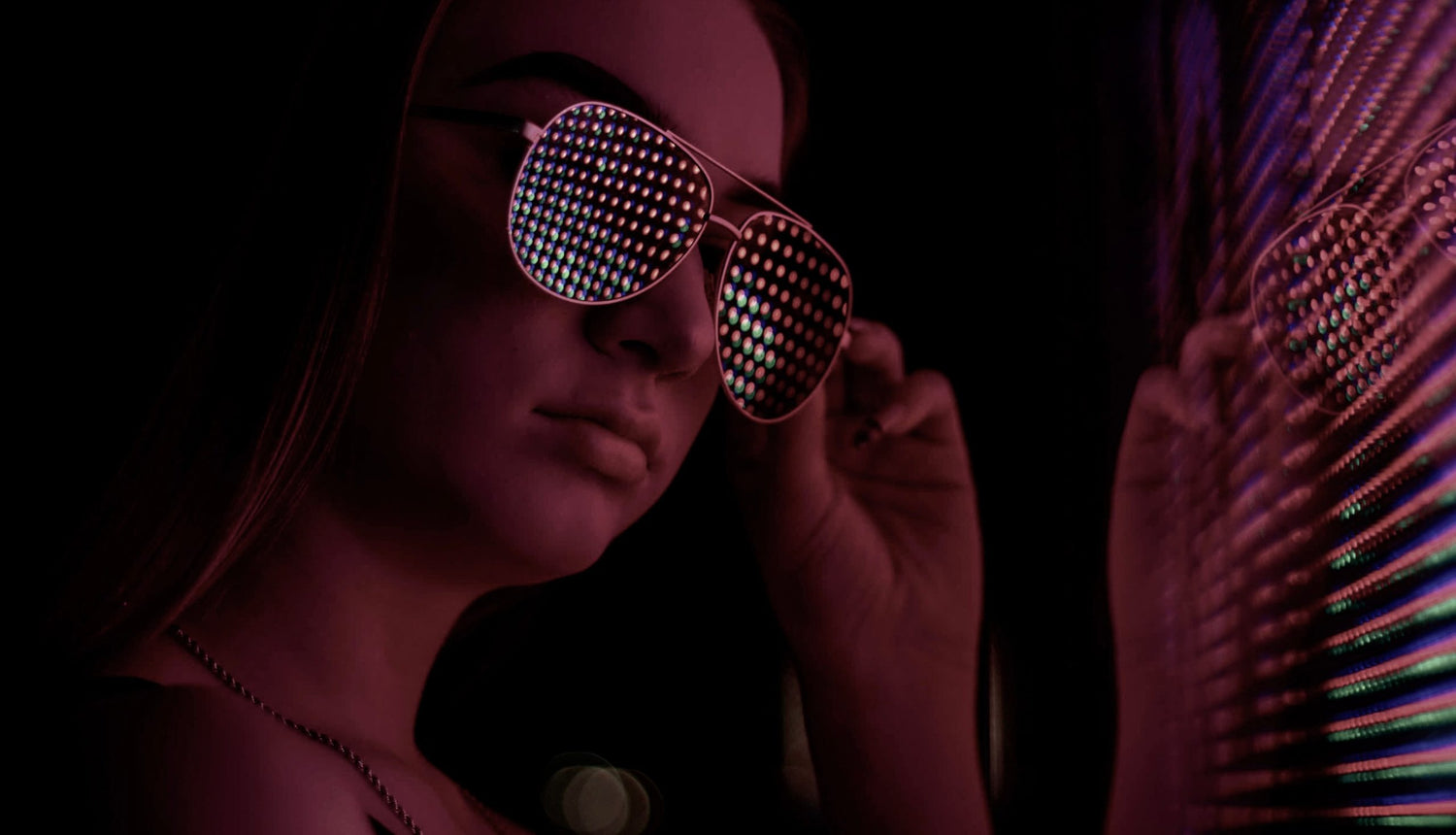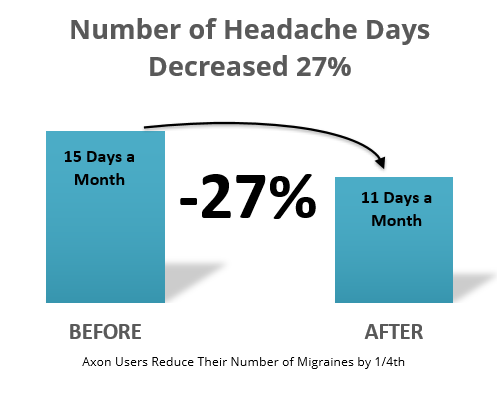“Get a little sunshine!” “Open a window, it’s too dark in here!” “Why do you keep it so dark in here? Turn on some lights!”
Do you cringe when someone says these things to you? Do you seek out the darkened corners of a room, pulling down the shades and lowering the lights? Does every supernova light ray, every blinding glare, somehow find its way to your very sensitive eyes?
Is the ensuing pain like a thunderclap in your cranium?
If so, you might be a migraineur and light is your kryptonite.
Light can be a real problem for someone with migraine that is triggered by photophobia.
In fact, study reveals that around 90% of migraineurs have light sensitivity issues.
And light sensitivity is no joke. It can literally bring you to your knees with watery eyes, terrible discomfort, and migraine. Oh, the migraine.
The light can feel as if it is boring a hole through your skull. Your only escape, only chance at relief, is to block those vicious, searing rays.
For many this means retreating to a darkened room. Taking the light down a notch or twelve does sometimes help the pain slowly subside.
Then there are those who try to defy the migraine prison. They are determined to keep going, regardless. One of the most popular methods for rebelling against light sensitive migraine is a simple pair of sunglasses with very dark lenses.
But just how effective are dark glasses for migraine?
You’re probably going to be pretty surprised at the answer to that.
Dark glasses for migraine: They’re everywhere!
In April of this year, representatives from Axon Optics attended Retreat Migraine, a patient-focused conference for people with migraine disease. It offers support to migraineurs as well as disease and treatment education. Attendees were treated to complementary therapy experiences while learning about the latest treatments and medications for migraine.
Needless to say, there was a high concentration of migraineurs attending the conference. Some were pretty easy to spot because they were the ones wearing their dark glasses indoors. The lights were dimmed during the entire conference but many attendees were still donning dark glasses for migraine as their only recourse against those stray, rebel rays of insidious light, lest it somehow find its way past that barrier.
Unfortunately, this is not unusual. Many people feel that slipping on dark sunglasses is the quickest, easiest way to get relief from light sensitivity and migraine pain. It seems like a perfectly reasonable, logical response to bright or flickering lights – but it isn’t.
In fact, it is one of the worst things you can do when you have a migraine attack.
Dark glasses lead to dark adaptation, and therein lies the rub.
Dark glasses partially block the sun’s glare. That is what they were designed to do.
Wearing them as a tool for managing your migraine is a very different issue and presents several problems. This is especially true when you are wearing them indoors.
First, the rays from the sun’s glare are not the same as the light emanating from a lamp or overhead bulb. Wearing dark glasses in that environment will often make it seem even darker, much darker than wearing the glasses and venturing outside.
This leads to a condition known as dark adaptation. It means that the eyes adjust to low light intensities. This affects the pupil’s reflex dilation, activating the rod cells in the eye instead of the cone cells.
Rod cells and cone cells are photoreceptors in the retinas of the eye. They allow the eye to focus and function by helping it adjust to its environment. Each type responds to light in a different way, allowing the eye to adapt to varying levels of light.
Cone cells are activated in bright or well lit environments. They are also responsible for color vision. Rod cells, on the other hand, are activated in dim light where they allow the eye to function better in a low light situation.
Activating rod cells (low light) when the environment calls for cone cells (bright light) can cause a number of issues with the eye, including headaches and migraine.
If you have light sensitivity issues, it is perfectly understandable that your first instinct would be to reach for your sunglasses to get some relief. The problem is, it likely does more harm than good.

Dark adapting eye issues
Chances are, you’ve experienced dark adaptation at some point. If you’ve ever walked out of a dark environment like a movie theater and stepped into the bright sunshine you probably felt a little overwhelmed by the light because it seemed so intense. Then your eyes adjusted, and you were better.
That’s what dark adapting is. When you were in the darkened environment, the rod cells in your retinas were activated and your eyes adapted to the dark. When you stepped into the sunshine, the rod cells were still activated, leaving your pupils dilated, which allowed them to take in more light in that dimly lit room.
So essentially, in those first few moments of walking from dark to light, you got an extra helping of sunlight in your eyes because they were dark adapted at the time of first exposure. Once the cone cells took over your eyes adjusted better to the lighted environment.
While dark adaptation is a perfectly natural biological response, it can become a problem when the normal function of the eye is disrupted.
Wearing dark glasses indoors actually trains your eye to stay in a chronic dark adaptive state.
It lets very little light in, so the rod cells are always active. Basically, it’s like you have been living underground.
Dark adaptation makes your eyes MORE sensitive to light!
In October 2010, 33 Chilean miners were trapped underground for two months. Being in that darkened environment for such a long time caused the chemical processes that govern the pupil’s reaction to light (contract and dilate) to become significantly reduced. The sudden, bright burst of light as they moved from underground to above ground could have actually caused damage because their eyes were not prepared to block the light. They had essentially lost the capability to make the necessary adjustments.
There is sufficient evidence to suggest that such long term dark adaptation (the effects that prolonged darkness has on vision) is reversible. In the case of the miners, the rescue crew equipped them with special glasses as they came out of the mine. Their hospital rooms were kept dark for several days after the rescue and then light was slowly reintroduced.
While this is an extreme case since the miners had extremely low light, the same principle applies. The same biological processes occur whether you are trapped in a mine or wearing dark glasses indoors. The levels of dark adaptation may vary somewhat, but the risks are still there. You might not have as difficult time as those Chilean miners but wearing dark glasses for migraine will result in you experiencing, to a somewhat lesser degree, the same dark adapting eye issues that they faced.
In short, it can exacerbate your light sensitivity.

New research shows that dark glasses for migraine may be counterproductive.
Several migraine studies have shown that completely avoiding triggers may cause a person to become more sensitive to them. Martin’s Trigger Avoidance Model of Headache (TAMH) suggests that instead of instructing migraine patients to avoid their migraine triggers, that doctors should instead be helping them learn to cope with the triggers.
Researchers have found that patients who undergo brief exposure to a migraine trigger results in that person experiencing an increased sensitivity to that trigger. On the other hand, patients who undergo longer periods of exposure to a migraine trigger experience a decreased sensitivity to the trigger.
This means that wearing dark glasses for migraine or retreating to a dark room in order to avoid migraine triggers could actually be causing your migraines to be not only worse, but more frequent as well. It definitely does not help light sensitive eye issues.
Cognitive behavioral therapy has been a successful treatment for migraines simply because it teaches the patient how to manage their triggers. It does not advise cutting out the triggers completely.
So beyond the dark adaptive eye problems, you could be making your light sensitivity worse by wearing the dark glasses indoors. While it may provide temporary relief from painful light, it can you to experience increased pain when you aren’t wearing them. It can also get gradually worse until you are wearing your glasses all the time.
The good news is, you don’t have to venture out with no protection at all. You do have options – healthier options for products and methods that are better and more effective for managing the impact of light.

Better options for light sensitive migraine relief.
Many migraineurs see only two options when trying to avoid an attack. They either remain in their home with the lights off and shades drawn, or they wear sunglasses indoors. But as we see in the studies here, that is not only ineffective, it is a really bad idea.
The general consensus among researchers is that a migraineur is better off remaining wherever they are – work, church, school – and wearing specially tinted migraine glasses than they are going home and retreating to a dark room.
By continuing to expose yourself to triggers (in a controlled environment) you are inadvertently making your light sensitivity issues and migraine worse. Instead, you should opt for allowing for some exposure to your migraine trigger.
Axon Optics eyewear with Avulux® Lenses for Migraie and Light Sensitivity have specially tinted lenses that lessen the impact of light without dark adaptation. They shield your eyes from painful light (namely blue, amber, and red wavelengths) but don’t block all types of light the way dark sunglasses do. And because some light can come in (particularly the soothing, green light), they won't make your sensitivity worse.
Axon Optics can be worn indoors and out and are a much better choice than dark glasses for migraine could ever be. We have a number of great frames for men, women, and kids, ranging from vintage to classic to modern. Try them for 60 days risk-free.
References
Axon Optics. (2018, April 04). Are you Dark Adapting Your Eyes? Retrieved from
https://www.axonoptics.com/2018/04/are-you-dark-adapting-your-eyes/
Digre, K. B., & Brennan, K. C. (2012, March). Shedding light on photophobia. Retrieved from
https://www.ncbi.nlm.nih.gov/pmc/articles/PMC3485070/
Hannibal, J., Georg, B., Hindersson, P., & Fahrenkrug, J. (n.d.). Light and darkness regulate melanopsin in
the retinal ganglion cells of the albino wistar rat. Retrieved from
https://link.springer.com/article/10.1385/JMN:27:2:147
Hayne, D. P., & Martin, P. R. (2019, March). Relating Photophobia, Visual Aura, and Visual Triggers of
Headache and Migraine. Retrieved from https://www.ncbi.nlm.nih.gov/pubmed/30737782
Katz, B. J., & Digre, K. B. (2016). Diagnosis, pathophysiology, and treatment of photophobia. Retrieved from
https://www.ncbi.nlm.nih.gov/pubmed/26875996
Kubik, S. U., & Martin, P. R. (2017, February). The Headache Triggers Sensitivity and Avoidance
Questionnaire: Establishing the Psychometric Properties of the Questionnaire. Retrieved from
https://www.ncbi.nlm.nih.gov/pubmed/27753075
Light Sensitivity Triggers Migraines. (n.d.). Retrieved from
https://www.axonoptics.com/light-sensitivity-triggers-migraines/
Light Sensitivity Triggers Migraines. (n.d.). Retrieved from
https://www.axonoptics.com/light-sensitivity-triggers-migraines/
Light and Dark Adaptation by Michael Kalloniatis and Charles Luu. (n.d.). Retrieved from
https://webvision.med.utah.edu/book/part-viii-psychophysics-of-vision/light-and-dark-adaptation/
Main, A., Dowson, A., & Gross, M. (1997, September). Photophobia and phonophobia in migraineurs between
attacks. Retrieved from https://www.ncbi.nlm.nih.gov/pubmed/9329231
Martin. (n.d.). Managing headache triggers: Think ‘coping’ not ‘avoidance’ – PR Martin, 2010. Retrieved from
https://journals.sagepub.com/doi/abs/10.1111/j.1468-2982.2009.01989.x
Mayberry, S. A. (2019, April 23). Do Indoor Sunglasses for Light Sensitivity Really Work? Retrieved from
https://www.axonoptics.com/2017/06/indoor-sunglasses-light-sensitivity-really-work/
Palmer, B., & Palmer, B. (2010, October 11). What are the health effects of spending more than two months in
a Chilean mine? Retrieved from
https://slate.com/news-and-politics/2010/10/what-are-the-health-effects-of-spending-more-than-two-months-in-a-chilean-mine.html
Photophobia and Light Sensitivity Guide. (n.d.). Retrieved from
https://www.axonoptics.com/photophobia-and-light-sensitivity/
RetreatMigraine. (n.d.). Retrieved from https://headachemigraine.org/retreatmigraine/





